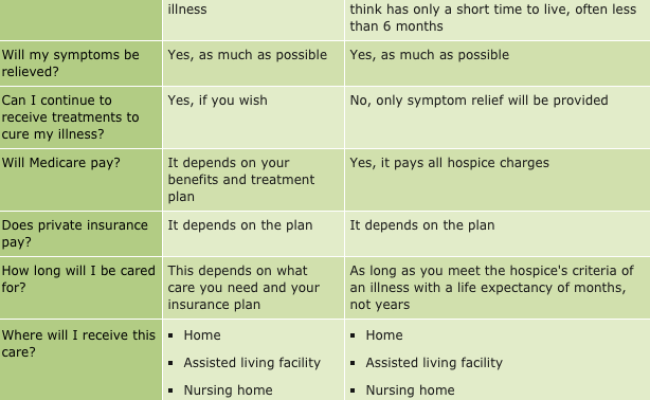
A specialty that treats digestive problems in children is gastroenterology. Pediatric gastroenterology is concerned with the health of the liver, pancreas and gastrointestinal tract. No matter what age your child is, they can benefit greatly from the expertise of a pediatric physician. Learn more about differences between pediatric and adults gastroenterologists and the treatment options available to them.
Family-centered care
In pediatric and adult healthcare, the importance of family-centered principles in care has increased. It emphasizes the involvement and participation of parents and caregivers in child care. It also encourages participation of children in the process of treatment. The Maternal and Child Health Bureau developed a set of principles and guidelines for family-centered treatment. These concepts are being increasingly discussed in health services and are essential for assessing quality.

PMCH's pediatric gastroenterology division is among the best in the nation, according to U.S. News & World Report. Our physicians are highly skilled and use the latest technology to diagnose and treat children with gastrointestinal conditions. Our gastroenterology department is a well-respected leader in research. We participate in both clinical and basic science projects. Numerous research projects have been sponsored by the National Institutes of Health and industry.
Minimally invasive procedures
There are many great reasons to consider minimally invasive options in gastroenterology treatment for children. These procedures can correct gastrointestinal problems such as hernia repairs, GI tract obstructions, and a wide range of metabolic and nutritional disorders. These procedures can prevent the need to have another surgery. Please note, however, that the information provided here is intended for informational purposes only and should not be used as medical advice.
EGD, also known as upper gastrointestinal Endoscopy (or EGD), is a minimally-invasive procedure that examines the lining of your stomach, esophagus, and upper duodenum. A small, light-emitting tube called an endoscope is inserted into the child's throat. A small camera called an endoscope is used to look at the inner lining of the digestive tract. Biopsies are taken to examine the digestive tract for any signs of inflammation, ulcers or infection.
Treatment options
A pediatric gastroenterologist treats a wide variety of digestive disorders, including Crohn's disease, ulcerative colitis, and esophagitis. They are able to diagnose and treat problems related to the gastrointestinal tract, such as chronic constipation and stomach upset. They are also skilled in treating inflammatory bowel disease, such as Crohn’s Disease and Ulcerative Colitis. These conditions cause pain and inflammation of the digestive tract.

A pediatric gastroenterologist will talk with the parents about the child’s medical history, and then recommend the best treatment. Non-surgical treatments are often used in children suffering from gastrointestinal disorders. Staff at Dayton Children's will work closely alongside you and your child to find the best possible treatment. While most children's gastrointestinal disorders can be treated without surgery, some will require an endoscopy, a small, flexible tube with a camera on its tip. The doctor will be able to see the lining of the child’s stomach, esophagus and duodenum with the endoscope.
FAQ
What are the different health care services?
A health service is a medical facility that offers healthcare services to patients. A hospital is one example of a health care facility. A hospital typically includes several departments like the emergency department and intensive care unit. It also has pharmacy and outpatient clinics.
What should I know regarding vaccines?
Vaccines offer a way to keep your body healthy and are extremely safe. Vaccines provide immunity against certain diseases. Vaccinations are given during the adolescence and childhood. Your doctor will help you decide when is the best time to get vaccines.
How can we improve the quality of our health care system
We can improve the health system by making sure that everyone gets high-quality healthcare, no matter where they live or what kind of insurance they have.
It is important that we ensure that all children get the necessary vaccines to prevent them from getting diseases such as rubella, measles, and mumps (MMR).
We must keep working towards reducing the costs of healthcare and ensuring that it remains easily accessible for all.
What happens if Medicare is not available?
The number of Americans without insurance will rise. Some employers will drop their employees from their plans. Many seniors will also be paying more for prescription drugs and other services.
What is the difference between a doctor and a physician?
A doctor is an individual who has completed his/her training and is licensed to practice medicine. A physician refers to a medical professional that specializes in one area of medicine.
What are the different types and benefits of health insurance
There are three types main types of health insurance.
-
Private health insurance covers many of the costs associated to your medical care. Private companies often offer this type of insurance. You only pay monthly premiums.
-
Although most medical costs are covered by public insurance, there are certain restrictions. Public insurance does not cover preventive services, routine visits to doctors, hospitals and labs, Xray equipment, dental offices, prescription drugs or certain tests.
-
You can use medical savings accounts (MSAs), to save money for future healthcare expenses. The funds are kept in a separate account. Many employers offer MSA programs. These accounts are tax-free, and they accumulate interest at rates similar to bank savings accounts.
What is the significance of the health-care system?
The country's health care system is a vital part of its economy. It improves the quality of life and helps people live longer, more healthy lives. It also creates employment for nurses, doctors, as well as other medical professionals.
No matter what income level, health care systems ensure that everyone has access to quality healthcare services.
You will need to be able to comprehend the functioning of healthcare systems if your goal is to be a doctor or nurse.
Statistics
- The healthcare sector is one of the largest and most complex in the U.S. economy, accounting for 18% of gross domestic product (GDP) in 2020.1 (investopedia.com)
- Foreign investment in hospitals—up to 70% ownership- has been encouraged as an incentive for privatization. (en.wikipedia.org)
- Healthcare Occupations PRINTER-FRIENDLY Employment in healthcare occupations is projected to grow 16 percent from 2020 to 2030, much faster than the average for all occupations, adding about 2.6 million new jobs. (bls.gov)
- For the most part, that's true—over 80 percent of patients are over the age of 65. (rasmussen.edu)
- The health share of the Gross domestic product (GDP) is expected to continue its upward trend, reaching 19.9 percent of GDP by 2025. (en.wikipedia.org)
External Links
How To
What are the 4 Health Systems?
The healthcare system includes hospitals, clinics. Insurance providers. Government agencies. Public health officials.
The goal of this infographic was to provide information to people interested in understanding the US health care system.
Here are some key points.
-
Healthcare spending is $2 trillion annually, representing 17% of the GDP. It's nearly twice the size as the entire defense budget.
-
Medical inflation was 6.6% in 2015, higher than any other category of consumer.
-
Americans spend 9% of their income annually on health.
-
In 2014, over 300 million Americans were uninsured.
-
Although the Affordable Health Care Act (ACA), has been approved by Congress, it hasn't yet been fully implemented. There are still large gaps in coverage.
-
A majority believe that the ACA must be improved.
-
The US spends more than any other nation on healthcare.
-
If every American had access to affordable healthcare, the total cost would decrease by $2.8 trillion annually.
-
Medicare, Medicaid, private insurers and other insurance policies cover 56%.
-
The top three reasons people aren't getting insured include not being financially able ($25 billion), having too much time to look for insurance ($16.4 trillion), and not knowing what it is ($14.7 billion).
-
HMO (health care maintenance organization) is one type of plan. PPO (preferred provider organizational) is another.
-
Private insurance covers almost all services, including prescriptions and physical therapy.
-
The public programs cover outpatient surgery as well as hospitalizations, nursing homes, long term care, hospice, and preventive health care.
-
Medicare, a federal program, provides seniors with health insurance. It pays for hospital stays, skilled nursing facility stays, and home health visits.
-
Medicaid is a joint state-federal program that provides financial assistance to low-income individuals and families who make too much to qualify for other benefits.